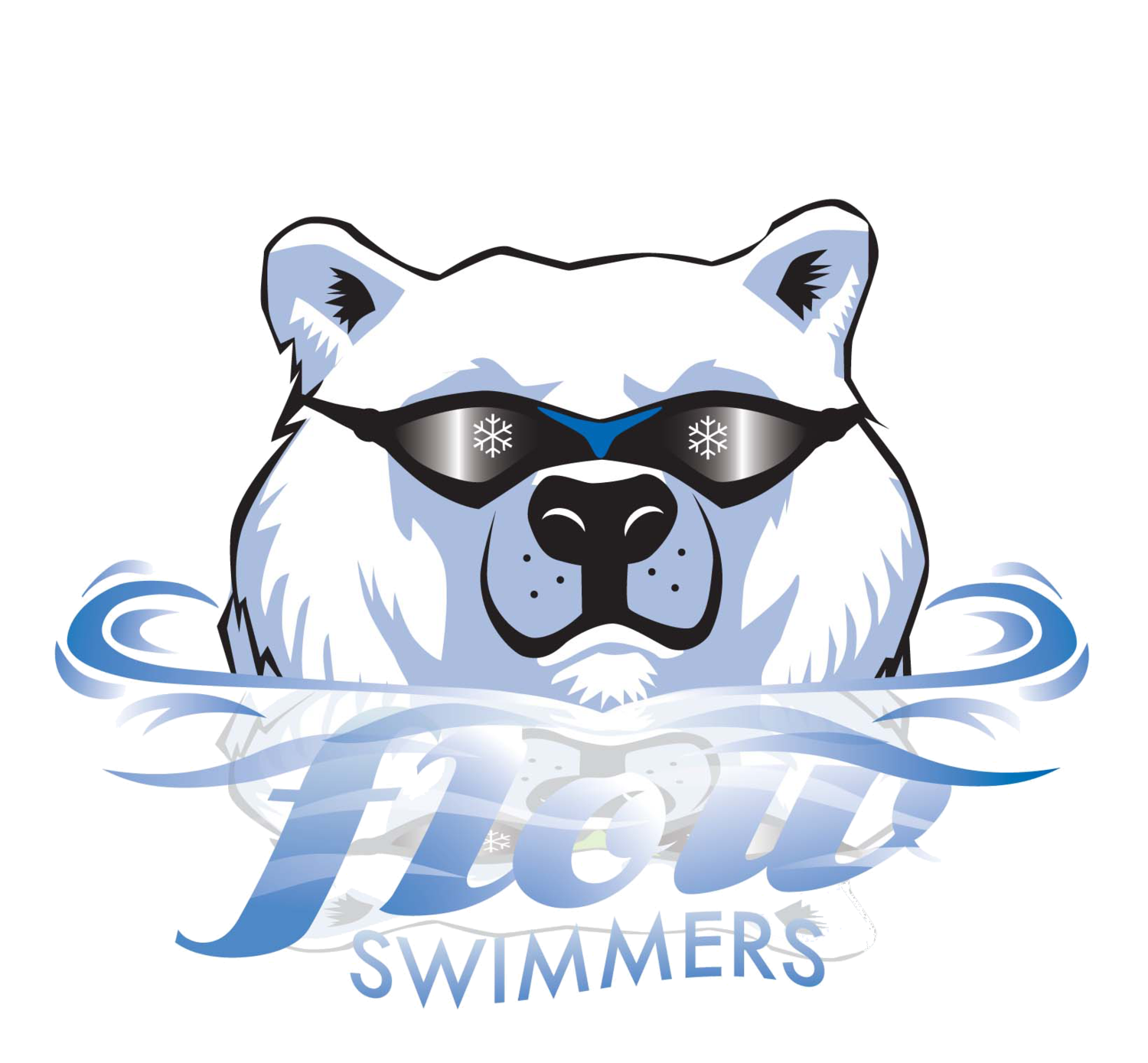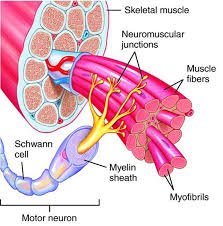
Welcome to My Lane
"Welcome to My Lane" is a refreshing splash in the face of conventional open water swimming. Crafted by a renegade swimmer nestled in remote Montana, this blog is for those who swim against the current. If you're tired of rules, regulations, and the self-appointed authorities of the sport, welcome to my lane.
Dive into unconventional wisdom with topics ranging from innovative training plans and nutrition to supplemental workouts and candid opinions on both open water and pool swimming. Expect a tone of uncharted waters that challenges the purist's version of the sport.
Join Coach Mark on a journey that's not just about swimming but thinking differently. Here, the real victory is in challenging norms and forging your own path. Dive in, swim your own swim, and make waves.
The Holistic Swimmer
I’ve been writing a bunch about training specificity, but now I’m going to contradict myself, as is my privilege, by summarizing everything with the HOLISITIC SWIMMER.
I’ve been writing a bunch about training specificity, but now I’m going to contradict myself, as is my privilege, by summarizing everything with the HOLISITIC SWIMMER.
First, lets take a moment to reflect on the journey we've embarked upon together, synthesizing the key concepts we've explored in the series "Mastering the Art of Specified Training in Swimming.”
1. Ultra-Short Race Pace Training (USRPT):
- We kicked off our series by diving into USRPT, emphasizing its versatility across different swimming distances and strokes. Remember, it’s not just for sprinters; it's a methodology that adapts to your specific race pace, whether that's a 50-meter dash or a marathon swim.
2. Muscle Fibers – Fast and Slow Twitch:
- Next, we explored the world of muscle fibers. Understanding the unique roles of fast-twitch and slow-twitch fibers is crucial in tailoring your training for either speed or endurance. Your body is a symphony of these fibers, each playing its part in your swimming performance.
3. Nutrition – Fueling for Success:
- Nutrition isn't just about what you eat; it's about finding a diet that resonates with your lifestyle, training needs, and personal preferences. We discussed debunking the 'bulk-up' myth and the importance of maintaining a balanced, consistent diet.
The Holistic Swimmer
The holistic swimmer is someone who recognizes that excellence in the pool is a reflection of harmony in various life aspects. It's about finding the right balance between rigorous training and personal well-being, between pushing your limits and nurturing your happiness.
In the holistic realm, we recognize that an athlete's performance is not solely dependent on what's on their plate. It's also about their feelings towards several key aspects of their life:
- Finances: Financial stress can directly impact dietary choices and mental well-being, both of which are crucial for training.
- Relationships: Harmonious personal relationships can provide emotional stability, enhancing focus and dedication to training and diet.
- Career and Job Satisfaction: A fulfilling professional life can boost overall happiness, positively influencing training and nutritional choices.
- Training Satisfaction: Enjoying and feeling good about one's training regimen can significantly affect dietary adherence and overall performance.
- Quality Sleep: Restorative sleep is crucial for recovery, and it's deeply interconnected with dietary habits.
- Diet: This is where nutrition directly comes into play, providing the energy and building blocks needed for training and recovery.
Many studies have shown how negative emotions impact athletic performance. Do not lose sight of your emotional baggage.
Your Unique Swimming Journey
As you move forward in your swimming journey, remember that the path to success is as unique as you are. Whether it’s adjusting your training methods with USRPT, understanding your muscle composition, fine-tuning your nutrition, or seeking harmony in your life outside the pool, each step you take is a part of a larger journey towards self-mastery in swimming.
Final Thoughts
Thank you for joining me on this enlightening journey through the art of specified training in swimming. As we close this series, I encourage you to carry these lessons with you as you carve your path in the waters of your choice. Keep swimming with purpose, passion, and a holistic perspective!
Nutrition in Long-Distance Swimming: The Balanced Approach
What's the real secret fuel for long-distance swimmers? In the latest entry of our 'Mastering the Art of Specified Training in Swimming' series, we're slicing through the waves of nutrition myths! 🍽️ From debunking the 'bulk-up' myth to why your favorite PB&J might just be your best pre-swim meal, we're diving deep into what fuels endurance in the water.
Thinking of 'bulking up' for your next cold-water swim because it will insulate you from the cold? Adding layers of fat for cold water is like packing for a polar expedition when you're just going to the fridge. Let's focus on acclimatization and leave the extra bulk for the bodybuilders!
The question of whether it's necessary to "bulk up" for cold water swims like the English Channel is a topic of ongoing discussion in the swimming community. Traditionally, many long-distance swimmers have believed that carrying extra body fat could provide an advantage in cold water by offering better insulation and buoyancy. However, this viewpoint isn't universally accepted, and there's a growing perspective that emphasizes overall fitness, adaptation to cold water, and individual physiology over simply adding extra body weight.
1. Cold Water Acclimatization: Adaptation to cold water through regular exposure is a crucial factor. Many swimmers train in cold water to acclimate their bodies, which can be as effective as carrying extra body fat. This acclimatization helps in regulating body temperature and improving the body's natural response to cold.
2. Body Composition vs. Fat Percentage: While extra body fat may offer insulation, it's not the only factor in cold water endurance. Muscle mass, metabolism, circulation, and individual physiological responses to cold also play significant roles. Some lean swimmers with good cold tolerance and efficient stroke techniques have successfully completed cold water swims.
3. Fitness and Endurance: High levels of fitness, strong swimming skills, and endurance are critical for challenging swims like the English Channel. Excessive body fat might actually impede swimming efficiency, increase drag in the water, and potentially affect stamina negatively.
4. Nutrition and Energy Efficiency: Efficient use of energy stores is vital in long swims. A well-balanced diet that optimizes energy use might be more beneficial than increased body fat. The focus is often on maintaining a diet that supports long-term endurance and energy availability.
5. Individual Variability: There's considerable individual variability in how swimmers respond to cold water. Some may perform well with a higher body fat percentage, while others may find that a leaner physique works better for them.
6. Scientific Evidence: There's a lack of extensive scientific research directly comparing the performance of swimmers with different body compositions in cold water endurance swims. Most evidence is anecdotal or based on personal experiences of swimmers and coaches.
Personally, I believe in maintaining one's ideal weight. It's about optimizing health and performance, not adding unnecessary pounds in the hope it'll keep you warmer. After all, efficient swimming and body heat generation come from well-trained muscles and a robust cardiovascular system, not just layers of fat. Assuming the additional weight will slow a person down, wouldn’t you rather swim a 12-hour English Channel rather than exposing yourself to the cold for a longer, 13-hour period?
Consistency in Diet: Stick to What You Know and What Works
As we gear up for big events, there's often a temptation to make drastic changes to our diet, hoping it'll boost performance. However, I advocate for consistency. Eating a healthy, balanced diet at all times is key. Changing your diet before a significant event can lead to unexpected results – and not always the good kind! Remember my PB&J post? Stick to what your body knows and loves.
Happiness: The Ultimate Nutritional Guide
As a coach, my primary goal is to ensure that my athletes are happy. This happiness transcends just being content with training regimes; it extends to their diet, body image, and overall lifestyle. Athletes who feel good about their diets, bodies, and training are more likely to perform better. It's not just about the calories or the nutritional content; it's about how these dietary choices fit into their overall sense of wellbeing.
Final Thoughts
In the end, the best diet for a long-distance swimmer is one that is sustainable, enjoyable, and health-promoting. Listen to your body, consult with experts, and maybe take a leaf out of Dr. Murch's book – experiment to find what works best for you. And always remember, your happiness and health are the true indicators of success.
Stay tuned for our next installment, where we'll dive into the world of mental preparation for long-distance swims. Until then, keep swimming and stay happy!
Muscle Fibers in Swimming: Optimized Performance
Ever wondered what makes a swimmer excel in a sprint but struggle in distance events, or vice versa? Dive into Part 2 of our series, 'Mastering the Art of Specified Training in Swimming,' where we unravel the mysteries of muscle fibers. We explore how the unique characteristics of fast-twitch and slow-twitch fibers shape a swimmer's performance and how targeted training can optimize these natural powerhouses for any event. Whether you're aiming for explosive power in sprints or enduring stamina in marathon swims, understanding and training your muscle fibers is the key to unlocking your full potential in the water.
Welcome back to "Mastering the Art of Specified Training in Swimming." After exploring USRPT in our first installment, we're now diving into the fascinating world of muscle fibers. How do they influence your swimming, and how can you train them for optimal performance?
The Myth: "Swimmers Are Either Sprinters or Distance Swimmers"
It's often said that sprinters are naturally endowed with more fast-twitch fibers, while distance swimmers have more slow-twitch fibers. While there's some truth here, it's not the whole story. Training plays a massive role in developing these fibers. Through specific training, you can enhance the efficiency of both fiber types, making you a versatile swimmer capable of excelling in various events.
Muscle fibers are not one-size-fits-all. They come in two primary types:
- Slow-Twitch (Type I): Think of these as your endurance experts. They're more efficient at using oxygen to generate fuel (ATP) for longer, sustained activities. They're crucial for long-distance swimming, helping you maintain pace without quick fatigue.
- Fast-Twitch (Type II): These are your sprinters. Type II fibers excel in quick, explosive actions but tire out faster. They're crucial in short, high-intensity bursts, like a 50m sprint.
Your training should reflect the demands of your events:
- For Sprinters: Focus on short, high-intensity sets. This approach targets your fast-twitch fibers, improving their ability to deliver explosive power when you need it most.
- For Distance Swimmers: Longer, steady-state swims are key. These sessions enhance the endurance capabilities of your slow-twitch fibers, allowing you to maintain a consistent pace over longer distances.
The Role of Specificity in Fiber Training
Remember the principle of 'specificity of motion' from our first post? It’s crucial here too. By training with the specific movements and pace of your race, you're directly targeting the muscle fibers most involved in those actions.
- Closer Look at Myelination
As we discussed previously, myelination is the process of developing a protective sheath around nerve cells, enhancing signal transmission. This process is vital for efficient movement. Consistent training in specific motions not only improves muscle fiber efficiency but also enhances myelination, leading to smoother, more coordinated movements in the water.
Practical Application in Your Training
Let's put this into perspective with an example. If you're training for a 200m freestyle event, your USRPT sessions might include sets like:
- 20 x 25m at your 200m race pace, focusing on maintaining form and speed throughout.
This set targets the muscle fibers and neural pathways involved in that specific event, enhancing both muscle and neurological efficiency.
Wrapping Up
Understanding and training your muscle fibers according to your swimming goals is key to success. Whether you lean towards sprints or endurance, a tailored approach to muscle fiber development can elevate your performance significantly.
Next up in our series, we'll tackle the crucial topic of nutrition in swimming. Stay tuned!
USRPT: Race Pace Training
In the first installment of our series, 'Mastering the Art of Specified Training in Swimming,' we introduce Ultra-Short Race Pace Training (USRPT). This training methodology is all about specificity, focusing on tailoring sets to match your intended race pace. Dispelling myths that label USRPT as only for sprinters, we demonstrate its versatility across different distances and strokes. We also delve into the science behind USRPT, emphasizing the importance of 'specificity of motion' and the physiological benefits of training at race pace.
Welcome to the first installment of our series, "Mastering the Art of Specified Training in Swimming." Today, we're diving headfirst into one of the most talked-about yet misunderstood training methodologies in the swimming world: Ultra-Short Race Pace Training (USRPT).
Does anyone else hate the practices where a coach writes up the entire practice on a white board with the TOTAL at the bottom? Good Will Hunting, perhaps.
When I arrive at a training session, I want to know what I am specifically working on THAT DAY. Anything else is just a grinder. My least favorite, I call them the DU drones, would swim 10 x 400s, and the next day, “to change it up,” would swim 14 x 300s. When I see a practice set like this, I only know that I am working on my 4K pace…and that’s not a race distance I am aware of (okay…Ironman)!
I’ve also had sessions where the coach says, “Today, we’re working on our 100 butterfly, so today’s set is 10 x 100s butterfly”…uh…NO WAY! There’s no going to be one stroke relevant to my 100 butterfly pace. Hence, it’s a waste of my time. I’d get just as much out of riding a stationary bike…less the shoulder injury.
To hold the proper pace and technique, regardless of the stroke and distance, I need something MUCH shorter: USRPT.
What Is USRPT?
Simply put, USRPT is a training approach that focuses on replicating a swimmer’s "race pace" in training sets. But wait, you might be thinking: isn't that for sprinters? Absolutely NOT!
USRPT caters to all distances and strokes, not just sprints. Whether you're preparing for a 50-meter sprint, a 10K, or ultra-distance open water swim, the concept remains the same: train at the speed you intend to race.
Dispelling the Myths
Myth 1: USRPT is Only for Sprinters
As someone who’s had success in sprints AND in long-distance open water swims, I can personally attest that USRPT can be beneficial across all distances. My personal credentials include World and National Rankings in pool events from the 50 Free to the 1500M (and everything in between) as well as National Championships in open water events from one mile to twelve. My longest race was the Ibiza Ultramarathon Swim of 30km…ALL USING USRPT as my training methodology.
Myth 2: USRPT Lacks Versatility
In fact, the specificity of USRPT allows for a great deal of versatility. If you can excel at a 50m sprint, who’s to say you can't conquer a 10K swim with the right training? The key is to have a specific training plan (at race pace) for each distance.
The Science Behind USRPT
At its core, USRPT engages your aerobic and anaerobic systems at the "race-pace" level, conditioning your body to maintain that pace for extended periods. If a person’s goal, for example, is to break the minute barrier in the 100 free, then the USRPT main set might look something like this:
30 x 25 yard “sprints” holding EXACTLY 15-second per 25 on a 30-second interval (allowing 15 seconds rest)
Once successful, the next progression would be the same except on a 25-second interval. The training thought process would be similar to weightlifting…more weight and/or more reps as you see improvement. But the GOAL is fixed.
Here was my main training set for the 30km Ibiza Ultramarathon Swim:
30 x 100 yards free holding EXACTLY 1:26 per 100 yards on 1:45 send-offs
Now this is QUITE slow for me, but this fit perfectly into what I needed to pace my race over 8-hours-plus. My body and physiology needed to know what it felt like to go perfectly at that pace.
So ULTRA SHORT RACE PACE in the case of a 30km event was 1:26/100. While I “could” go faster, I did not want to.
With USRPT, the objective is to maintain the targeted pace for each segment. If you fail to maintain the pace in two consecutive segments, the set is terminated; do something else.
Specificity of Motion: Why It's Crucial
USRPT's focus on "race pace" naturally incorporates "specificity of motion." Every stroke you make in practice should replicate the stroke you intend to use in the race. This fine-tunes not just your speed but also your technique, efficiency, and overall race performance.
The concept of myelination is highly relevant when talking about "specificity of motion" in training regimens like USRPT. By focusing on specific motions and training at race pace, you're not just training your muscles but also the motor neurons that control them. Over time, these neurons become better at transmitting signals, thanks to increased myelination, making you more efficient in your specific racing event.
For more science on this concept read: How Myelination Can Make You a Better Athlete.
Setting a SMART Goal
Most are familiar with the acronym “SMART” for goal-setting: it is very meaningful within USRPT.
S = Specific (100 free in 1:00)
M = Measurable (time and distance)
A = Achievable (something that is within reason and is realistic)
R = Relevant (in alignment with long term values)
T = (Time relevant…a specific end date or “by when”)
Is going under 1:00 in the 100 free by the 2024 USMS Nationals realistic? If so, it’s a worthy goal.
With USRPT, I also like to swim at the speed I WANT TO GO, and I do not base my daily workout goals to my current conditioning….”Start with the end in mind.” That is achieved by shortening the distance or number of reps.
For example, maybe you can’t swim that 100 in under one minute today, but you can swim a 25 in under 15-seconds. And that’s where I’d start; as many 25s as possible at the GOAL PACE with no more than 20 second’s rest. As I improved, I’d squeeze the interval.
For longer distances, just do the math, and don’t forget to account for wall (or lack thereof) and feeding for open water.
Conclusion
USRPT is a versatile, scientific, and highly specific approach to swimming training. Whether you’re new to the world of swimming or a seasoned long-distance veteran, USRPT can be adapted to meet your specific needs.
Stay tuned for the next installment where we'll dive deeper into the fascinating world of muscle fibers!
Mastering the Art of Specified Training in Swimming
This introductory blog post sets the stage for an upcoming series focused on specialized training techniques in swimming. Coach Mark addresses both novices and experienced swimmers, outlining the key topics that the series will cover. From understanding the principles of Ultra-Short Race Pace Training (USRPT) to exploring the science behind muscle fibers, the series aims to offer a comprehensive guide to optimizing swimming performance. The introduction also highlights the goals of the series: knowledge sharing, myth-busting, and providing expert insights.
Doc Councilman Creative Coaches Award
As someone who has found solace, excitement, and purpose in the expansive waters of Flathead Lake, and who coaches swimmers aiming to conquer bodies of water around the world, I’ve always believed in the importance of specialized training. Whether you're a sprinter eyeing the clock or an open-water swimmer preparing for a 10K journey, your training should be as unique as your swimming goals.
I'm excited to announce a new 5-part blog series that aims to dissect the multi-faceted topic of specified training in swimming: "Mastering the Art of Specified Training in Swimming."
Why This Series?
1. Knowledge Sharing: Having guided various swimmers through their aquatic journeys, I've collected a treasure trove of practical know-how and scientific understanding. This series aims to share that wisdom with you.
2. Myth-Busting: From misconceptions about Ultra-Short Race Pace Training (USRPT) to misunderstandings about muscle fiber roles in swimming, we'll be debunking myths that might be holding you back.
3. Expert Insights: Along with my experience, the series will incorporate scientific research, expert opinions, and real-world case studies to provide a holistic view.
What to Expect?
Part 1. USRPT (Ultra Short Race Pace Training) Discussed: Ever wondered how to incorporate race pace training effectively? We’ll delve into the nitty-gritty of USRPT and its applicability to both sprint and long-distance events.
Part 2. Muscle Fibers and The Building Blocks of Speed and Stamina: Fast-twitch, slow-twitch—what does it all mean? This post will elaborate on the science behind muscle fibers and how they relate to performance in the water.
Part 3. Specificity of Motion and Why Every Stroke Counts: Do you believe in the 'one-size-fits-all' training approach? Think again. We’ll discuss why specific strokes and techniques can make or break your performance.
Part 4. Determining Your Ideal Race Pace: From pool tests to open-water experiences, we'll guide you on how to determine your ideal race pace, particularly useful for those planning long swims like an English Channel crossing.
Part 5. The Versatile Swimmer: Believe it or not, you can excel in both sprinting AND distance! This post will explore how a strategic training approach can make you a well-rounded swimmer.
Who Is This For?
- Novices: If you're just starting, this series will provide a foundational understanding of specialized swim training.
- Advanced Swimmers and Coaches: Even if you've been in the game for years, the series aims to offer new insights and refresh your existing knowledge.
So, mark your calendars and stay tuned for a deep dive into the art of specified swimming training. Whether you’re a beginner or a seasoned athlete, I promise this series will have something beneficial for you.
See you in the next post!























